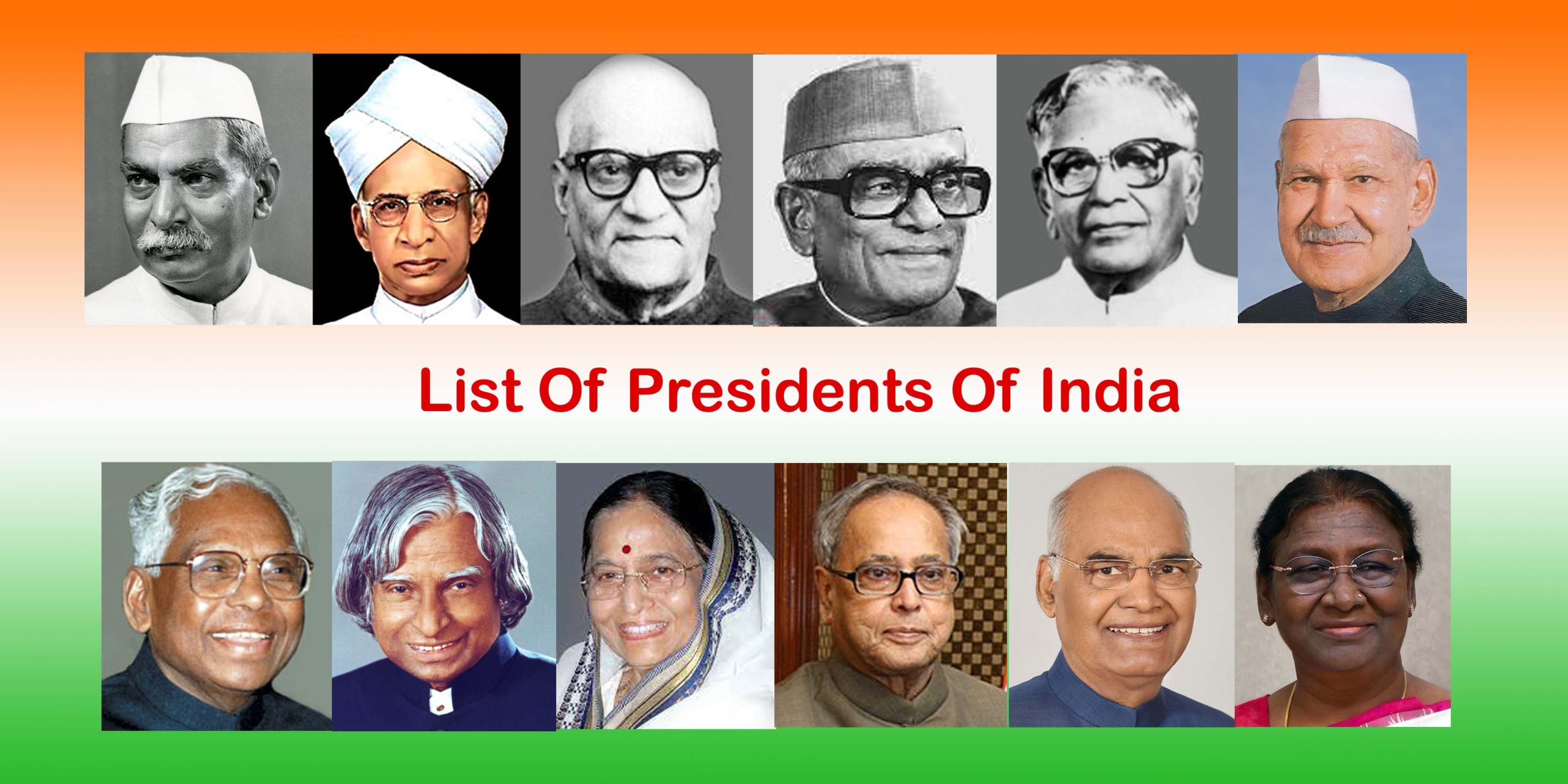
A Journey Of The Presidents Of India Since Independence
Since 1950, when India embraced freedom and democracy, a series of Presidents have led it. These leaders have done much more than merely participate in official events; they’ve been pivotal in shaping the nation’s destiny. In India, the President commands the military and embodies the nation’s premier citizen, epitomizing the essence of the Indian Constitution. In this blog, we journeyed through time, exploring the The Presidents Of India Since Independence. We’ll delve into their identities, significant achievements, challenges encountered, and the enduring influence they’ve imparted.
A Journey Of The Presidents Of India Since Independence, we will look at these leaders, discussing the big projects they worked on, their challenges, and how they’ve left a mark on the state. Let’s dive into the stories of these incredible Presidents and explore how they’ve shaped India into the place it is today.
A Journey Through Leadership: Presidents of India Since 1950
Rajendra Prasad (1950-1952, 1952-1957, 1957-1962)
Rajendra Prasad made history as India’s first President right after independence. He was the boss for an impressive three terms, setting a record that still stands. Those early days were about building India’s democracy and setting up its rule book, and Prasad was right at the heart of it. He dedicated himself to following the brand-new constitution and guided India through its initial steps as a young nation.
Key Contributions:
- Rajendra Prasad played a crucial role in defining the presidency in India and setting examples for his successors.
- He significantly contributed to India’s transformation into a republic, shifting it from a British dominion to an independent nation.
- Furthermore, he championed the reconstruction of the Somnath Temple, emphasizing the revival of cultural heritage after independence.
- Additionally, he prioritized education that combined moral values with modern learning, blending traditional wisdom with contemporary education strategies.
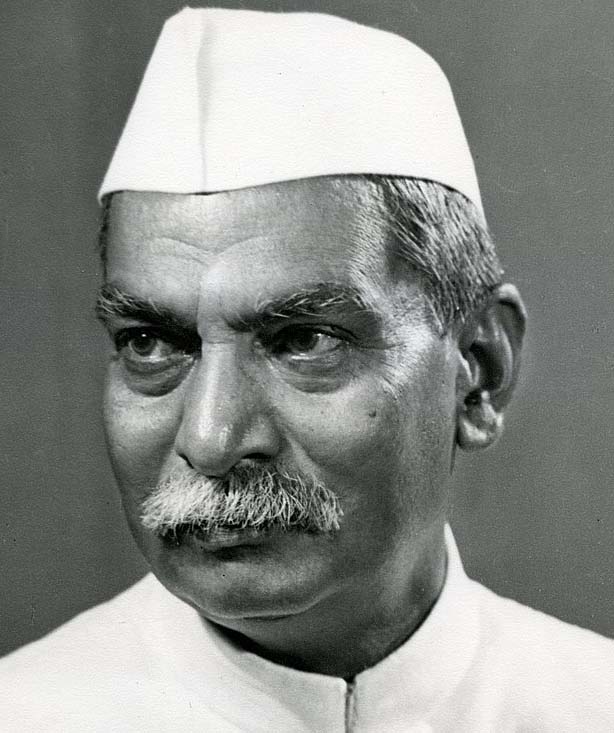
Challenges:
- Rajendra Prasad dealt with the complex dynamics between the President and Prime Minister Nehru in the nascent stage of India’s independence.
- To foster a sense of national unity, he worked tirelessly to unify a diverse nation, encompassing various cultures, languages, and communities.
- He addressed the significant upheavals caused by the partition, including resettling refugees and integrating princely states into the Indian Union seamlessly.
Legacy: Rajendra Prasad’s monumental legacy as India’s first President shines through his wisdom, diplomacy, and unwavering commitment to national ideals. His leadership in the Republic’s formative years established a benchmark for integrity, humility, and dedication to public service. Prasad’s contributions to India’s democracy and his vision for a united and forward-moving nation remain a source of inspiration for future generations.
Sarvepalli Radhakrishnan (1962-1967)
Sarvepalli Radhakrishnan stepped in as President after Rajendra Prasad during a critical phase when India was making its mark worldwide. Known for his deep thoughts and contributions to education, Radhakrishnan’s time as President was like a breath of fresh air for India’s intellectual and cultural life. His leadership became crucial, especially during the 1962 Indo-China war, where he offered moral solid support during tough times.
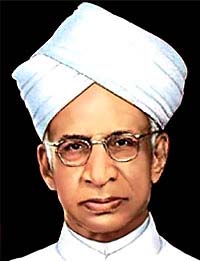
Key Contributions:
- Sarvepalli Radhakrishnan placed education and intellectualism at the forefront of India’s development strategy, leveraging his expertise as a philosopher and educator.
- He tirelessly promoted India’s global stature, advocating for peace and dialogue amidst Cold War tensions and positioning India as a pivotal figure in the Non-Aligned Movement.
- Radhakrishnan emphasized the transformative power of education, insisting on integrating moral and ethical values into the educational curriculum for the youth.
- Furthermore, he inaugurated the celebration of Teacher’s Day on his birthday, September 5, to honour teachers and highlight their indispensable contributions to societal advancement.
Challenges:
- Radhakrishnan tackled the challenge of guiding India’s recovery from the 1962 war with China, striving to maintain unity and strength among the citizens.
- He carefully navigated his relationship with the Prime Minister, ensuring the President’s role remained respected and constitutional.
- Moreover, he addressed the substantial challenge of fulfilling India’s diverse population’s educational and cultural needs despite tight budgets and the necessity for significant social reforms.
Legacy: Sarvepalli Radhakrishnan’s presidency stands out for its profound thinking and significant impact on India’s educational and cultural spheres. He underscored the significance of insightful leadership in policy-making and steering national discourse. His legacy includes a reputation for elegance, intelligence, and dedication to democracy and humanistic values, inspiring people to integrate traditional practices with modern concepts as they advance.
Zakir Husain (1967-1969)
Zakir Husain was a trailblazer as India’s first Muslim President and the first to pass away while serving. Before becoming President, he was well-known for his work in education, helping to build and improve many of India’s schools and colleges. Although his time as President was short, it was a crucial period of change and challenges for India, and his impact was significant.
Key Contributions:
- Zakir Husain strongly advocated for education as a driver of national progress, leveraging his extensive academic experience.
- He actively supported secularism and celebrated India’s cultural diversity, fundamental to the country’s democratic fabric.
- Husain tirelessly promoted tolerance and cultural understanding among India’s varied communities.
- Additionally, he championed initiatives to enhance educational infrastructure and accessibility nationwide, focusing on the underprivileged.
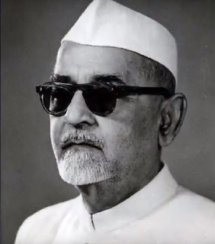
Challenges:
- He dedicated himself to following the brand-new constitution and guided India through its initial steps as a young nation.
- He addressed the significant disparities in wealth and social status evident across various regions of India.
- Moreover, Husain diligently maintained the dignity and impartiality of the presidency amidst the shifting dynamics of Indian democracy.
Legacy: Zakir Husain, though serving briefly as President, made enduring contributions through his respectful leadership and significant impact on education. People remember him as a scholar deeply committed to secularism, unity, and democracy. His life and work inspire educational and cultural endeavours across India, demonstrating his lasting effect on the nation’s intellectual and cultural landscape.
Varahagiri Venkata Giri (1969-1974)
V.V. Giri was India’s fourth President and came into the role with a rich background in the trade union movement and several government roles. His time as President saw a lot of political changes, like the Indo-Pakistani War of 1971 and the creation of Bangladesh. Giri was known for his commitment to workers’ rights and social justice.
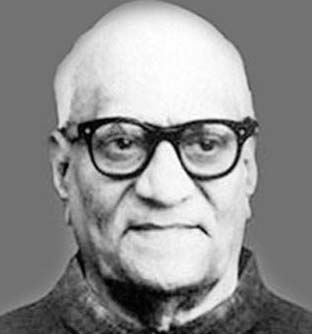
Key Contributions:
- V.V. Giri strongly supported workers’ rights, drawing on his trade union leadership to influence national policies.
- He frequently served as a mediator in political conflicts, promoting dialogue and agreement among various political factions.
- During his presidency, he oversaw significant events, including the Indo-Pakistani War of 1971 and India’s support for Bangladesh’s independence.
- Moreover, Giri advocated for educational and societal reforms to ensure equality and justice for all.
Challenges:
- V.V. Giri navigated the complex landscape of Indian politics amid significant transformations, including power transitions and the challenge of national integration.
- He addressed economic disparities and worker concerns amidst swift industrialization and social changes.
- Additionally, he balanced governance demands with the expectations of a diverse and rapidly evolving society.
Legacy: V.V. Giri’s presidency stands out for its commitment to social justice, the rights of workers, and effective political diplomacy. He actively contributed to the labour movement and ensured the country’s stability during difficult times, profoundly impacting India’s political and social fabric. Throughout his tenure, Giri championed the principles of democracy, inclusivity, and the welfare of the commoner, setting standards that continue to shape Indian governance and policy decisions today.
Fakhruddin Ali Ahmed (1974-1977)
Fakhruddin Ali Ahmed became President during a tough time for India, with many political and economic difficulties. In 1975, he notably declared an emergency, sparking significant debates about freedom and the operation of democracy in India during a tumultuous period.
Key Contributions:
- Fakhruddin Ali Ahmed played a crucial role during the emergency, making significant decisions that directly influenced India’s democracy.
- He worked hard to maintain the country’s unity and strength amid political instability.
- Additionally, he supported various initiatives to enhance social and economic development, aligning with the government’s commitment to improving the well-being of the Indian population.

Challenges:
- Fakhruddin Ali Ahmed tackled the difficult task of navigating through the political and constitutional crises that led to the emergency.
- During this period, he aimed to strike a careful balance between effective governance and preserving democratic principles.
- He also faced significant criticism and concerns over civil liberties and the accumulation of power throughout the emergency.
- Additionally, he addressed significant socio-economic challenges such as inflation, unemployment, and industrial disputes amid a highly charged political environment.
Legacy: Fakhruddin Ali Ahmed’s presidency marks a challenging phase in India’s democratic narrative. Despite the contentious Emergency period, people still recognize his commitment to public service and significant role in crucial political moments as India navigated difficulties towards stability and growth. His time in office underscores the critical need to balance power and governance, always prioritizing democratic values.
Neelam Sanjiva Reddy (1977-1982)
Neelam Sanjiva Reddy became President right after a tough time in India, the Emergency, starting a fresh page for the country’s democracy. He secured the presidency without opposition, and his term became memorable for reinstating the spirit of democracy and upholding constitutional principles challenged during that era.
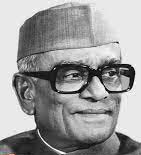
Key Contributions:
- Neelam Sanjiva Reddy actively restored the President’s role, dignity, and independence following the emergency, demonstrating the importance of constitutional adherence in leadership.
- He championed a non-partisan presidency, emphasizing the President’s duty to safeguard the constitution and maintain stability in Indian politics.
- Furthermore, he played a critical role in ensuring the smooth transition of power and the effective functioning of parliamentary democracy, even amid political instability and the formation of new governments.
Challenges:
- Neelam Sanjiva Reddy guided the President’s office through the challenging times following the emergency, ensuring the reinstatement of democracy and its institutions.
- He tackled the fragmented political landscape, facing the emergence of coalition politics, which challenged the constitutional norms for forming and maintaining stable governments.
- Additionally, he navigated the presidency amid growing demands for social justice, regional autonomy, and economic reforms, demonstrating the diverse aspirations of the Indian populace.
Legacy: Neelam Sanjiva Reddy celebrated his presidency by reinforcing democracy and the rule of law in India, demonstrating the importance of fairness, wisdom, and teamwork in government leadership. Rising above party politics to defend democratic values and constitutional integrity, he continues to shape India’s political dialogue and democratic actions today.
Giani Zail Singh (1982-1987)
Giani Zail Singh’s time as President was a notable period in India’s political scene, filled with debates and challenges to the constitution. Being the first Sikh President, his term was crucial amid severe political unrest, including the crisis in Punjab and the upsetting incidents of Operation Blue Star.
Key Contributions:
- Giani Zail Singh worked diligently to unite India, actively addressing the cultural and communal rifts, especially amid escalating tensions in Punjab.
- He faithfully performed his presidential responsibilities, even amidst challenging scenarios that tested the President’s office’s boundaries, such as applying Article 356 in state politics.
- Singh dedicated efforts to enhance social welfare and support marginalized communities, consistently advocating for social justice and equal opportunities for everyone.
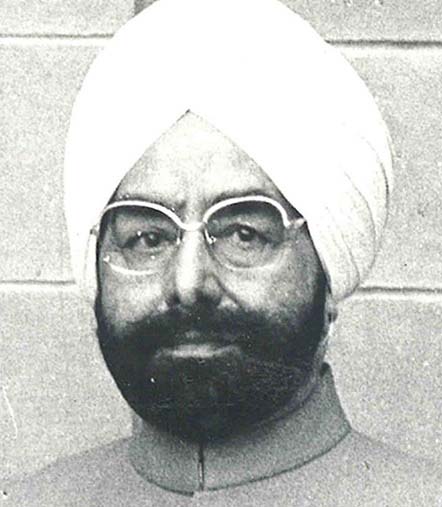
Challenges:
- Giani Zail Singh entered the presidency during a tumultuous time marked by intense political strife and communal unrest. He encountered notable challenges during his time in office, especially with the Punjab insurgency and the aftermath of Operation Blue Star, posing significant tests to India’s security and unity.
- He navigated his presidential responsibilities amid escalating conflicts between the executive and legislative branches, focusing notably on the policies and actions of the central government.
- Furthermore, Singh addressed public perceptions of his presidency, confronting critiques regarding his relationship with the Prime Minister and his responses during critical national crises.
Legacy: Giani Zail Singh’s presidency marks a challenging chapter in India’s democratic journey, demonstrating the problematic balance of leading with integrity amid political and social turmoil. People still examine his tenure, especially in discussions about a President’s role in balancing constitutional authority, political responsibilities, and the aim of national unity. Despite controversies, his commitment to uniting India and championing democratic values is crucial to his political legacy.
Ramaswamy Venkataraman (1987-1992)
Ramaswamy Venkataraman became President during a pivotal time in India’s history, steering the country through significant economic and political changes. His time in office was like a bridge from old-school politics to the start of substantial changes that would push India’s economy forward.
Key Contributions:
- Ramaswamy Venkataraman steadied India’s political landscape, particularly during periods of upheaval and transition.
- He laid the foundations for economic reforms that opened India’s economy to global markets.
- Furthermore, he strongly supported advancements in science, technology, and education, recognizing their essential role in India’s development.
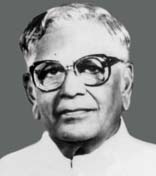
Challenges:
- Ramaswamy Venkataraman tackled significant challenges during his presidency, confronting political unrest and the complexities of coalition governance that tested India’s democratic resilience.
- He initiated crucial economic reforms, navigating through opposition to set the foundation for transformative changes in India’s economy in the early 1990s.
- Additionally, he dedicated efforts to maintaining national unity and social harmony amid diverse regional and communal tensions, demonstrating the critical need for thoughtful and balanced leadership.
Legacy: Hailing Ramaswamy Venkataraman, people applaud his elegant preservation of India’s constitutional and democratic principles despite facing substantial political and economic challenges throughout his presidency. His early advocacy for economic reforms and dedication to national development have impacted India’s progress.
Shankar Dayal Sharma (1992-1997)
Shankar Dayal Sharma assumed the presidency of India during a pivotal period marked by economic and political transformations. His time in office saw India opening up its economy and becoming more connected with the world. Sharma led with solid values and a clear vision for a modern India, guiding the country through the fast-paced changes happening both globally and within India.
Key Contributions:
- Shankar Dayal Sharma actively strengthened democracy and adhered to the constitution amid India’s political fluctuations.
- He championed reforms in education and society, underscoring the importance of literacy and learning for India’s advancement.
- Moreover, he supported the liberalization of India’s economy, recognizing the country’s need to engage in the global market.
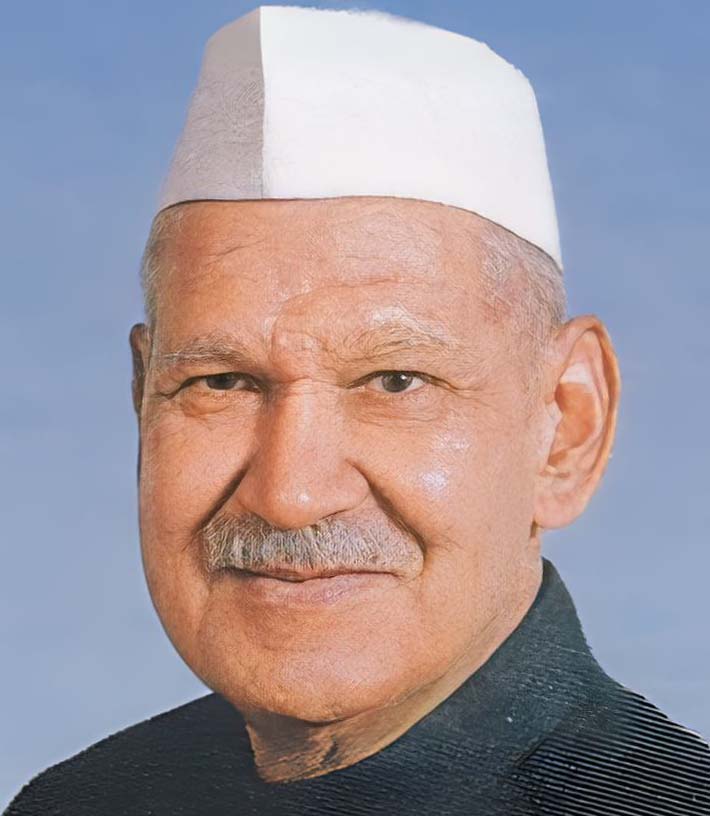
Challenges:
- Shankar Dayal Sharma tackled the formidable challenges of economic reforms, ensuring growth benefited everyone.
- He guided India through political instability, ensuring the parliamentary democracy functioned smoothly despite coalition politics.
- Additionally, he actively preserved India’s tradition of religious and cultural respect amid rising tensions, promoting unity in diversity.
Legacy: People remember Shankar Dayal Sharma for leading with dignity, dedicating himself steadfastly to the constitution, and guiding India through a transformative period during his presidential tenure. His advocacy for education, social reform, and economic liberalization has impacted the nation’s development trajectory.
K. R. Narayanan (1997-2002)
At the juncture of substantial economic reforms and a global demonstration of commitment to democracy, K. R. Narayanan assumed the presidency of India. His term saw India figuring out its role after the Cold War, adapting to global changes, and experiencing societal and political shifts. With a strong passion for social justice and equality, Narayanan was critical in leading India through these crucial transitions.
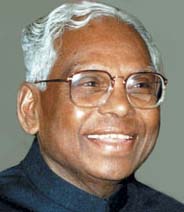
Key Contributions:
- K. R. Narayanan actively contributed to his presidency by championing social justice and advocating for policies that supported marginalized communities.
- He firmly upheld democracy and equality, consistently reminding the government of its responsibilities to its citizens.
- Embracing economic reforms, Narayanan carefully scrutinized their social impact, striving to distribute the advantages of globalization across all societal segments.
Challenges:
- K. R. Narayanan tackled numerous challenges throughout his presidency. He addressed the widening economic disparity between the affluent and the impoverished that accompanied India’s rapid economic expansion.
- Furthermore, he actively worked to soothe religious tensions and steadfastly maintained India’s commitment to spiritual equality despite numerous obstacles.
- Additionally, Narayanan navigated India’s foreign relations in an ever-evolving global landscape, mainly focusing on relations with neighbouring countries.
Legacy: People remember K. R. Narayanan for his intellectual prowess, ethical integrity, and unwavering commitment to justice and equal treatment. He actively strengthened India’s democracy and championed inclusive growth, ensuring everyone could participate in the nation’s development. This effort was particularly crucial during a significant phase of India’s growth. Narayanan’s legacy continues to inspire those who cherish democracy and the importance of social justice.
A. P. J. Abdul Kalam (2002-2007)
The “Missile Man of India,” A. P. J. Abdul Kalam, assumed the presidency during a period of booming technology, with the nation’s focus on enhancing security. He dreamed of making India a developed country by 2020, using science and tech as critical tools. Kalam’s time as President showed how much he believed in the importance of education, inspiring young people, and the power of dreaming big.
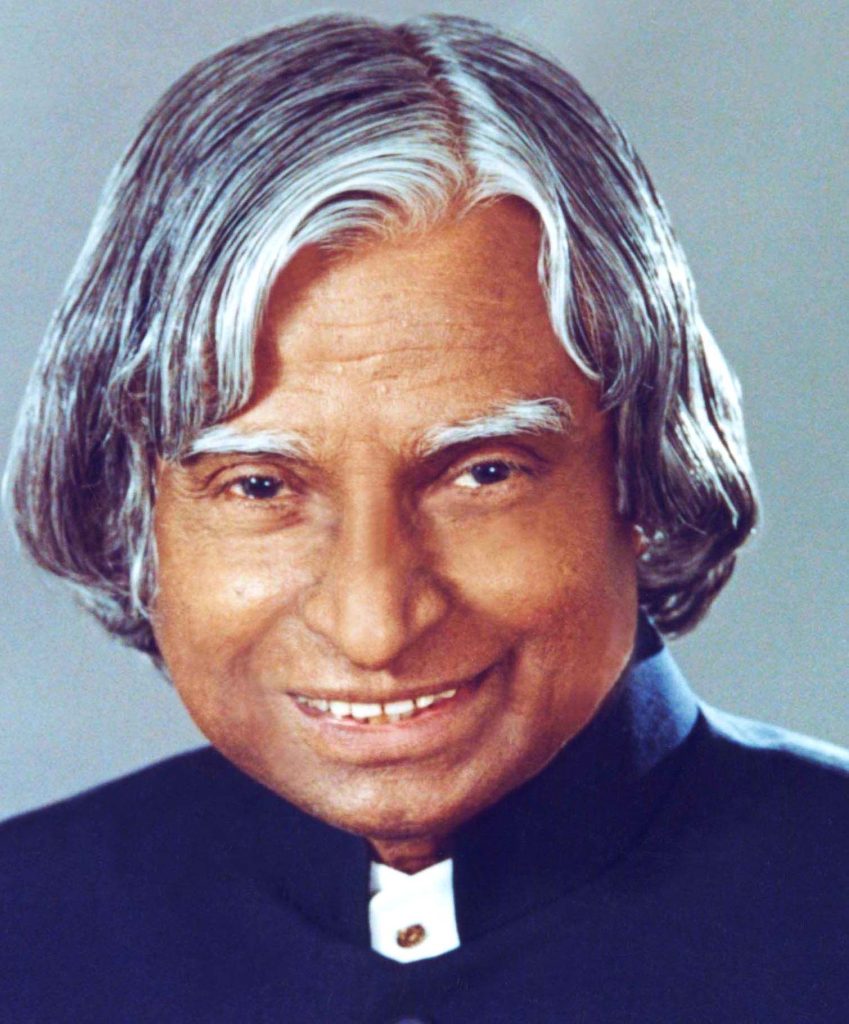
Key Contributions:
- A. P. J. Abdul Kalam significantly encouraged children and young adults to explore and innovate, particularly in science and technology.
- He dedicated considerable efforts to enhancing India’s security by contributing to developing indigenous defence projects.
- Furthermore, he pledged to enhance rural living conditions by introducing the PURA (Providing Urban Amenities to Rural Areas) initiative, aiming to bring urban benefits to rural areas.
Challenges:
- A. P. J. Abdul Kalam tackled numerous challenges throughout his presidency.
- He sought to modernize the education system to align with the technological era, focusing on practical learning over rote memorization.
- He championed innovation and creativity in an environment that traditionally valued high academic scores above original thinking.
- Kalam also pursued economic growth while prioritizing environmental sustainability and ensured that the growth’s benefits were distributed fairly among all, not just a select few.
Legacy: People still fondly remember A. P. J. Abdul Kalam’s presidency because he was approachable, inspired many, and maintained a positive outlook under all circumstances. His vision for India, detailed in his book “India 2020,” inspires leaders and the general public. Kalam’s legacy, marked by significant contributions to science and education and his compassionate and forward-thinking leadership, encourages everyone to dream big for their country and its future.
Pratibha Devisingh Patil (2007-2012)
Pratibha Devisingh Patil broke new ground as India’s first woman President, marking a significant step forward for women’s rights and empowerment in the country. She took office during fast economic development and India’s growing influence worldwide. Throughout her time as President, Patil focused on promoting fairness in society, empowering women, and ensuring growth benefited everyone.
Key Contributions:
- Pratibha Patil actively supported women’s rights and empowerment, advocating for initiatives to enhance their social participation.
- She emphasized the importance of education for girls as a pathway to social and economic upliftment.
- Additionally, Patil underscored the significance of sustainable development and resource conservation to ensure a healthy planet for future generations.
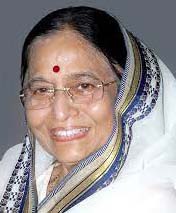
Challenges:
- Pratibha Patil actively addressed the challenge of closing the gender gap across various fields, ensuring women’s safety and rights in defiance of traditional norms.
- She strived to align India’s rapid economic growth with environmental conservation and equitable benefits.
- Furthermore, Patil dedicated efforts to modernize educational infrastructure, enhancing accessibility and relevance for contemporary learning, thereby facilitating success for all learners.
Legacy: Pratibha Patil, as President, made significant strides in emphasizing women’s empowerment and social justice. She actively promoted better education and sustainable development, shaping critical policy decisions. Being the first woman in the office, her leadership highlighted the necessity of collective progress and women’s vital role in steering India’s future.
Pranab Mukherjee (2012-2017)
Pranab Mukherjee, known for his deep understanding of Indian politics, became the President in 2012. His time in office focused on making democracy more robust and ensuring everyone had a fair chance to grow. His presidency happened during a critical economic and social change in India to help the country face its challenges while celebrating its unity and diversity.
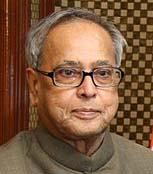
Key Contributions:
- Pranab Mukherjee significantly contributed to the support of democracy and the strengthening of India’s parliamentary system, promoting greater involvement and awareness among citizens.
- He emphasized the importance of education and innovation for India’s advancement, advocating for necessary reforms to tackle current issues.
- Additionally, he concentrated on ensuring that India’s economic growth was inclusive, benefiting all segments of society, and made this approach a central element of his policy initiatives.
Challenges:
- Pranab Mukherjee tackled significant challenges throughout his presidency, addressing the complexities of India’s social and political scene, including corruption, governance, and public accountability.
- He endeavoured to rectify economic disparities and emphasized sustainable development to harmonize rapid economic expansion with environmental conservation.
- Additionally, he strived to unite the nation and foster unity within India’s diverse and occasionally fragmented society.
Legacy: Pranab Mukherjee celebrated democracy, ensured inclusive growth and emphasized the importance of education and innovation during his presidency. Leading with respect and a deep understanding of India’s governance, he has significantly shaped the country’s path towards becoming a major global player, firmly rooted in its democratic and diverse values.
Ram Nath Kovind (2017-2022)
In 2017, the election of Ram Nath Kovind as the President of India marked a significant moment, highlighting the importance of his humble background and symbolizing that anyone in India can aspire to achieve great dreams. His time as President was about ensuring everyone is treated fairly, including people who often get left out. Kovind was known for his respectful way of supporting the essential ideas in the Indian Constitution and looking out for the well-being of all citizens.
Key Contributions:
- Ram Nath Kovind actively championed the cause of those less privileged, advocating for fairness and equal opportunities for all.
- He strongly emphasized the transformative power of education, significantly higher education, initiating numerous nationwide programs to enhance educational quality.
- Furthermore, he vigorously supported women’s rights and opportunities, underscoring the importance of their participation in every aspect of life.
Challenges:
- Ram Nath Kovind addressed India’s diverse complexities, encompassing religious, cultural, and socio-economic differences.
- He ensured that the country’s governance genuinely mirrored the constitutional ideals of justice, liberty, equality, and fraternity.
- Furthermore, Kovind steered the presidency through a shifting political landscape, balancing traditional customs with modern democratic principles.
Legacy: Ram Nath Kovind’s presidency shines for his commitment to fairness, inclusiveness, and elevating those often marginalized. He significantly impacted by highlighting the critical importance of education, gender equality, and support for needy people. His legacy illuminates the President’s role in spearheading societal transformation and advocating for a government that deeply cherishes democracy and inclusivity for all.
Droupadi Murmu (2022-Present)
Droupadi Murmu broke new ground as the first tribal woman to become President of India in 2022, marking a huge step forward for the country’s dedication to including all its people. Her rise from a simple background to the nation’s top office is genuinely inspiring, highlighting her commitment to helping those less fortunate and working for the good of everyone.
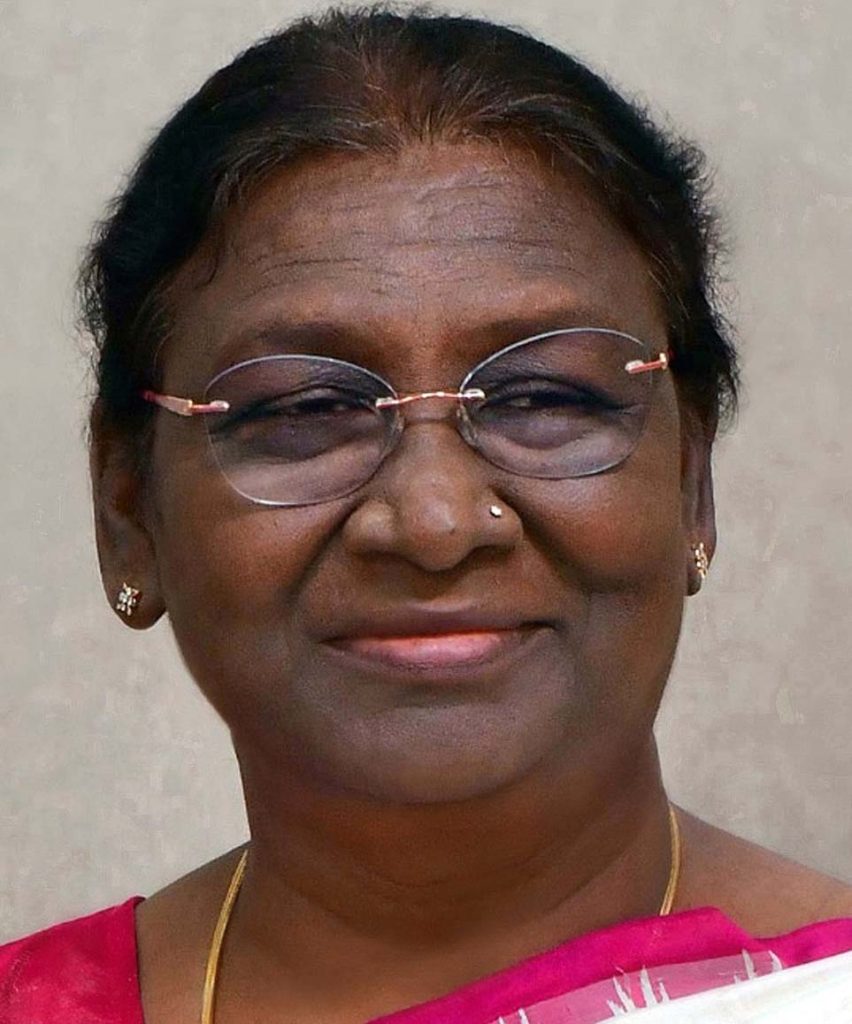
Key Contributions:
- Droupadi Murmu actively supports integrating and empowering tribal communities within Indian society, emphasizing their vital participation and empowerment.
- She views education and women’s empowerment as essential for societal improvement, actively promoting initiatives that enhance educational accessibility and quality for the underprivileged.
- Murmu advocates for environmental protection and sustainable development, valuing the conservation of India’s natural heritage and promoting eco-friendly practices.
Challenges:
- Droupadi Murmu tackles numerous significant challenges head-on. She addresses the persistent problems that prevent tribal and other marginalized groups from accessing equal opportunities.
- She actively ensures that India’s economic growth harmonizes with environmental protection, particularly in tribal and rural areas.
- Moreover, Murmu navigates India’s complex political landscape to foster unity and celebrate the nation’s diverse cultures and traditions.
Legacy: Droupadi Murmu’s presidency is shaping a significant impact on India, driving the nation towards greater inclusivity, empowerment, and sustainable development. She prioritizes the well-being of tribal communities, advocates for women’s empowerment, and underscores the need for environmental protection. In doing so, Murmu addresses India’s diverse population’s expectations and confronts the country’s significant challenges. Her leadership marks advancements in achieving equality, justice, and prosperity across all societal segments.
The Presidents Of India Since Independence, they have shaped the country from its independence to facing today’s global challenges. They have each made a lasting impact on India’s democracy through their leadership and values. By paving the way for the nation’s progress, they aim for a future of inclusivity, fairness, and opportunities for all. As India advances, the visions and principles of these remarkable leaders keep guiding its path.
On Postswirl blogging site, take a closer look at their achievements on The Presidents Of India Since Independence: the hurdles they faced and the difference they have made in bringing the state forward.




